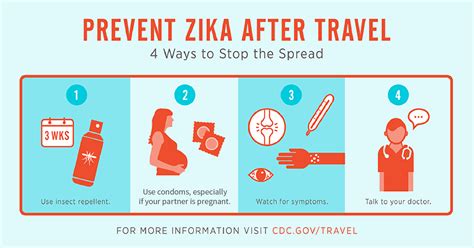5 Ways Zika Travels

Introduction to Zika Virus
The Zika virus has been a significant concern for global health, particularly since its outbreak in 2015. This virus, primarily transmitted through the bite of an infected Aedes species mosquito, can cause severe health issues, including birth defects such as microcephaly and other neurological disorders. Understanding how Zika travels is crucial for preventing its spread and mitigating its impact. This article explores five ways Zika can travel, emphasizing the importance of awareness and preventive measures.
1. Mosquito Transmission
The most common way Zika virus travels is through the bite of an infected mosquito. Aedes aegypti and Aedes albopictus mosquitoes are the primary vectors. These mosquitoes are found in tropical and subtropical regions and can also transmit other diseases like dengue fever, chikungunya, and yellow fever. When an infected mosquito bites a human, it can transfer the virus into the person’s bloodstream, leading to infection. This method of transmission highlights the need for effective mosquito control strategies, including the elimination of breeding sites and the use of insecticides.
2. Mother to Child
Another way Zika can travel is from a pregnant woman to her fetus, a process known as vertical transmission. This can occur during any trimester of pregnancy and has been linked to severe birth defects, including microcephaly, where the baby is born with a smaller head size due to abnormal brain development. The risk of transmission and the severity of the outcomes can vary, but all cases of Zika infection during pregnancy are considered high risk. Therefore, pregnant women or those planning to become pregnant should take stringent precautions against mosquito bites and consider avoiding travel to areas with ongoing Zika virus transmission.
3. Sexual Transmission
Zika virus can also be transmitted through sexual contact. This includes vaginal, anal, and oral sex, and the virus has been detected in semen even after the acute illness has resolved. The exact duration the virus remains present in semen and can be transmitted is not well defined, but it is known to persist for several months. This mode of transmission is particularly concerning because it can occur even if the infected individual does not show symptoms, and it can lead to infection in the partner, potentially affecting unborn babies if the partner is pregnant. Safe sex practices, including the use of condoms, are recommended for individuals who have traveled to or live in areas where Zika is present.
4. Blood Transfusion
There have been reports of Zika virus transmission through blood transfusion, although such cases are rare. The virus can be present in the blood of an infected individual, and if this blood is transfused into another person, it can lead to Zika infection. Blood banks in areas where Zika is endemic screen donations for the virus to minimize this risk. However, the possibility of transmission through blood transfusion underscores the importance of stringent screening processes for blood donations, especially in regions with active Zika transmission.
5. Organ Transplantation
Similar to blood transfusion, there is a theoretical risk of Zika transmission through organ transplantation from an infected donor. While no documented cases exist, the potential for transmission is a concern, given the virus’s ability to persist in bodily fluids. Organ procurement organizations and transplant centers must be vigilant about screening potential donors for Zika, especially if they have recently traveled to or reside in areas with ongoing Zika virus transmission.
🚨 Note: Prevention is key in controlling the spread of Zika virus. This includes eliminating mosquito breeding sites, using insect repellents, practicing safe sex, and avoiding travel to areas with active transmission, especially for pregnant women or couples planning to conceive.
In summary, the Zika virus can travel through various means, including mosquito bites, from mother to child during pregnancy, sexual transmission, blood transfusion, and potentially through organ transplantation. Understanding these pathways is essential for developing effective strategies to prevent the spread of the virus and protect vulnerable populations, particularly pregnant women and their unborn babies. By acknowledging the risks associated with Zika and taking proactive measures, individuals can significantly reduce their chances of infection and contribute to global efforts to combat this disease.
What are the primary symptoms of Zika virus infection?
+
The primary symptoms of Zika virus infection include fever, rash, joint pain, and conjunctivitis. However, many people infected with Zika virus won’t have any symptoms or will only have mild symptoms.
How can I protect myself from Zika virus infection during travel?
+
To protect yourself from Zika virus infection during travel, use insect repellents, wear protective clothing, and stay in air-conditioned or screened rooms. Additionally, choose a hotel or lodging with active mosquito control measures.
Can Zika virus infection be treated?
+
There is no specific treatment for Zika virus infection. Treatment is generally focused on relieving symptoms, such as getting plenty of rest, drinking fluids to stay hydrated, and taking medicine like acetaminophen to reduce fever and pain.